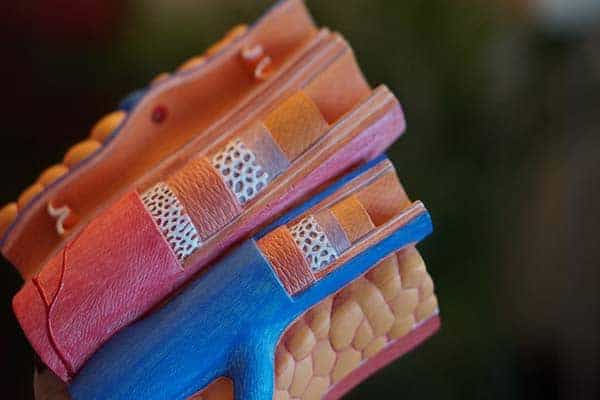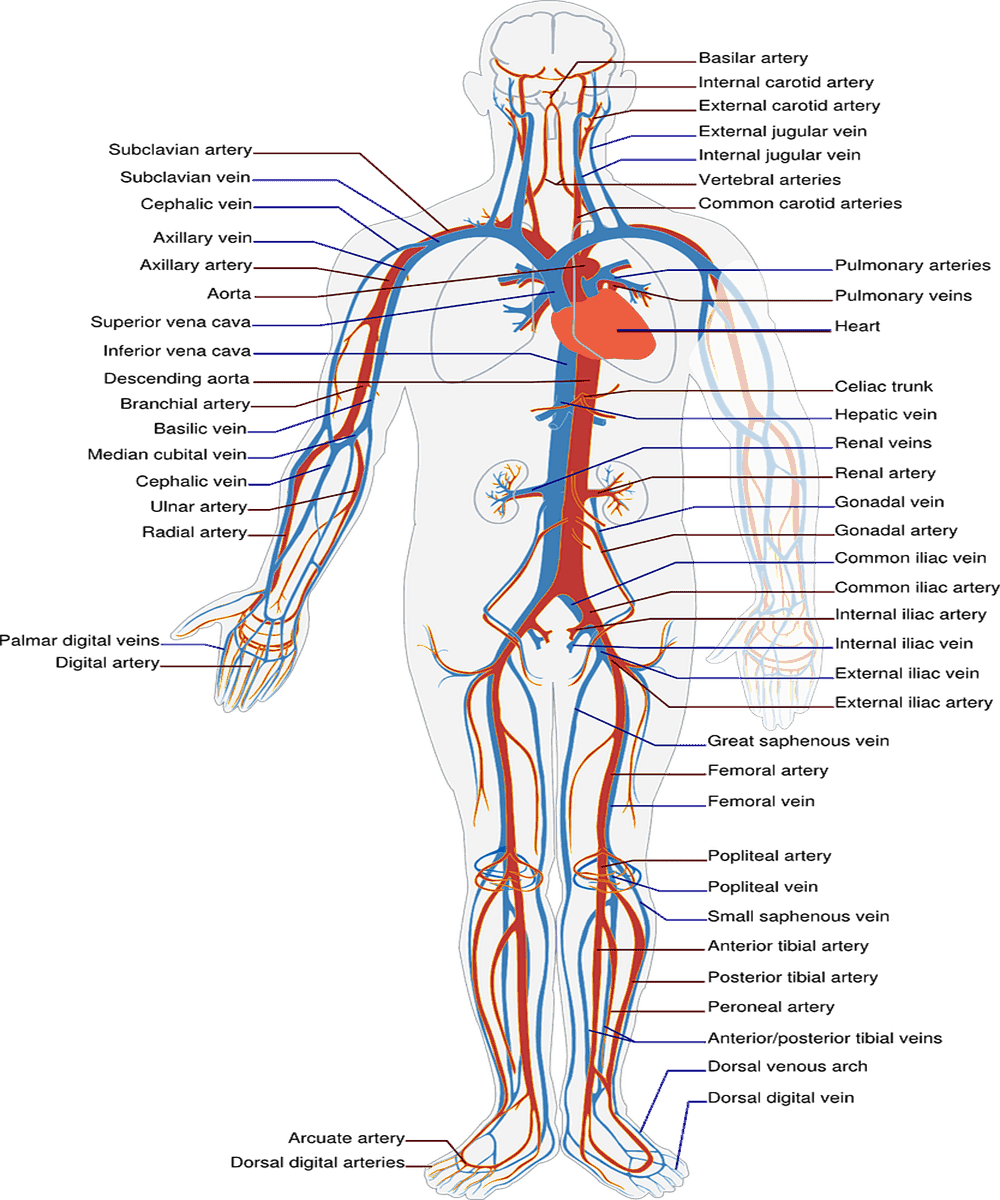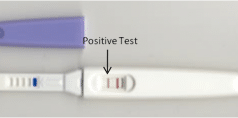There exist some form of structural difference between the arteries and the veins. Both vessels serve different purposes, and it is logical for everyone to be aware of it. Anyway, I know you are excited to know what the structural differences are. So let’s get down to business.
Alright, let’s answer the question of the structural difference that exists between our artery and vein.
The muscular walls of our arteries are thick and elastic as compared to that of the veins. The elastic fibers veins have are just a few, and they also possess thin walls. Plus, the reason our arteries have these structural attributes is so that they can cope with the high pressure of oxygen-rich blood that comes from our heart. The elastic walls make it possible for the arteries to go back to their normal shape after conducting blood flow.
Now you know the structural difference that arteries and veins have. Anyway, I did not stop here, as you can see. I touched on other areas about these two vessels. Please, continue reading to get more useful information.
Meaning And Duties Of The Arteries And Veins
You may have heard of vestigial organs and how useless they are. The appendix is one of them. However, there is a serious debate on whether this organ is useless or not. However, what I can tell you is that vestigial organs are useless.
The arteries and veins are not useless. These, among other vessels, help to keep our organs in top shape. That is why damages done to these vessels can be fatal.
Both the vein and artery perform the same function but in different ways. For instance, the artery helps to transport oxygen-rich blood from the heart to the body. The vein helps to make reoxygenation possible.
What this implies is that our veins help to take blood that is low in oxygen back to the heart to get it fired up with oxygen. It is just like reapplying body cream to your dry skin to keep it moist.
So you can see that both blood vessels are essential. One handles low oxygen blood while the other (artery) deals with oxygenated blood.
Differences Between The Artery And Vein: Important Facts You Need To Know
Most people think that the artery and vein are the same things. And you cannot blame them because both vessels perform almost the same function. They are both involved in blood transportation.
Anyway, we are going to look deeply at the differences that exist between the artery and the vein. I believe after reading this part; there will no longer be any confusion regarding the two vessels.
The duty arteries and veins perform
Alright, let’s start with the duties that both blood vessels perform. The work of the artery is to move oxygen-rich blood away from our dear heart, while the vein takes blood that has little to no oxygen back to the heart.
So the major difference here is the nature of the blood they both handle. Arteries manage oxygen-rich blood, but the vein is more concerned about making blood rich in oxygen, and thus, takes low oxygen blood from the body to the heart.
Location of the artery and vein
Another notable difference between the artery and vein is their location. I will like to point out that both are located within the body. But the artery is situated deeper within our body as compared to the vein.
The artery is not even visible to the naked eyes when you look at the skin. But the vein is visible and is very close to our skin. When you tie up the arm of an individual, the vein will pop up. Lab technicians use this process to collect blood from the veins for analysis.
Color of the artery and vein

The color of these two blood vessels also differs. And remember, I said that the artery helps to transport oxygenated blood. Because of that, the artery has a red color.
The vein, on the other hand, transports deoxygenated blood to the heart. And as a result, its color is blue. So the artery is red while the vein has a blue color.
Nature of blood they transport
The work of the artery is to transport oxygenated blood away from the heart. However, the only artery that deals with deoxygenated blood is the pulmonary artery.
The veins, on the other hand, transports deoxygenated blood away from our hearts. The pulmonary vein is the only vein that transports oxygenated blood.
Lumen of the artery and vein
The lumen of these two blood vessels also differs. The artery has a narrow lumen, although it might change based on one’s heartbeat. The vein has the opposite. Its lumen is wider.
Artery and vein: the presence of valve
In the beginning, I explained that the artery is structurally fortified to handle the high pressure of blood. And I will also like to add that this blood vessel does not require a valve. So, it does not have one.
The blood that flows through the artery does so with full force. So there is no way it will flow back. But, with the vein, it is an entirely different story.
Blood that flows through the vein does so at low pressure. And as a consequence, there is a high tendency that blood might flow backward if nothing is done to stop it. That is why the vein has a valve. It is there to present this from happening.
The wall of the artery and vein
I already spoke about the wall of these two blood vessels at the beginning. But we are going to revisit it here. As I said, the artery was designed to handle the high demands that transporting oxygenated blood from the heart brings.
The wall of the artery is super strong and thick. It comes composed of elastic fibers, fibrous tissues, and muscles. And the vein is quite the opposite.
The wall of the vein is thin. Why won’t it when blood flows through it at low pressure. It does not need the properties artery has. The vein also has fibrous tissues. Plus, there’s no muscle or elastic fibers.
Speed and pressure of blood: Artery and vein
Again, we spoke about this before. So we won’t be focusing much attention on this. The pressure at which blood flows through the artery is quite high when compared to the vein.
So, the speed at which blood travels through our artery is faster than it does through the veins.
Direction that blood flows via artery and vein
I already told you that the artery’s work is to move blood from the heart. Now when it does, it takes the blood to different areas of the body to be used.
The vein does quite the opposite. It takes deoxygenated blood from different areas of the body back to the heart.
Types of artery and vein
The types of artery we have are systemic and pulmonary. But when it comes to veins, we have systemic, pulmonary, deep, and superficial veins.
Artery And Veins: What Disease Affects These Blood Vessels?
We have talked about the function and differences that exist between the artery and vein for a while now. So, let’s talk about diseases that can disrupt how these two blood vessels function.
When it comes to diseases that affect the blood vessels (arteries and veins), the common words used are vascular diseases. And it refers to conditions that affect one’s network (circulatory system) of blood vessels.
Here Is Something You Should Know About Vessels
Not all of them move blood. The lymph nodes and vessels, for example, get rid of severely damaged cells from the body. They are a cleaning system that helps to prevent us from developing cancer or infections.
Now back to vascular diseases. Anything can become a disease of the vessels. For instance, when your tissues do not get the volume of blood it needs, that’s a disease right there. And the condition is medically regarded as ischemia.
I will also like you to know that vascular diseases can range from mild to severe. Some are even life-threatening.
Other types of vascular diseases:
- Stroke
- Varicose vein
- Carotid artery disease
- Peripheral artery disease
- Critical limb ischemia
- Deep vein thrombosis
- Abdominal aortic aneurysm
- Chronic venous insufficiency
Who Is More At Risk Of The Vascular (Vein And Artery) Disease?
Everyone, if you ask me! We are all in great danger of this disease. No one would say vascular disease only affects the rich or elderly, though age is a factor.
The rise in conditions like Type II diabetes and obesity is also making matters worse for Americans. And this, together with a large population of aged people, is making vascular diseases become an epidemic.
For instance, peripheral artery disease is said to be affecting over 8.5 million individuals. And the worse thing about this disease is that it can affect anyone, irrespective of age.
However, this post does not have to end in such a tragic tone. And you do not have to be scared of developing vascular diseases. Just lead a healthy life and avoid things that can increase your risk of developing these diseases. There are medical institution where you can find home blood treatments.
Conclusion
So, now you know the structural difference between arteries and veins. They are also straightforward to understand. Knowing the differences will also help to eliminate confusion and make us know more about our bodies. The thing is the more you know about the human body, the fewer issues you will have. You may also live longer because you have sound knowledge of your body.
You May Like These Articles As Well:









